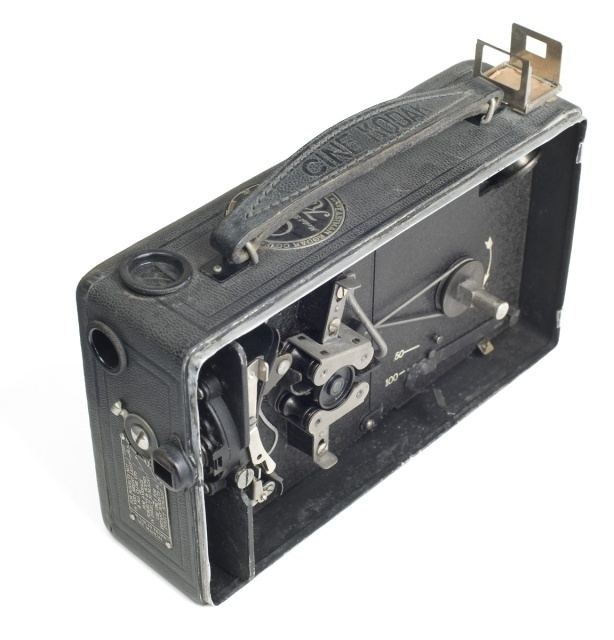 | ||
The Cine-Kodak was the first 16mm camera, introduced in 1923. It was a rectangular cast aluminum box approximately 8 inches square, and was cranked by hand at two turns per second to achieve the necessary 16 frames per second. Hand turning meant that a tripod was essential while allowing varying speeds and single frames to be taken. Accessories such as lenses and a motor attachment became available later. Production ceased in 1930. In 1925, Kodak followed up with a spring motor-driven Cine-Kodak Model B, at which time the original Cine-Kodak was re-designated as Model A.
Contents
Later 16mm Models
In 1929, a Model BB for 50-ft reels and an additional 8 frames/second speed was introduced, followed by the Model K in 1930, which was an enlarged BB for 100-ft reels. The Model K was joined briefly by a stripped-down Model M, but the latter camera did not sell well since it lacked some of the very features that made the Model K appealing. In 1933, the Cine-Kodak Special was introduced for advanced amateur and semi-professional work, and quickly became popular with professionals for its vast range of capabilities. The new Kodak S-mount was introduced with this camera.The Cine-Kodak Special II was introduced in 1948 with a diverging turret but was otherwise unchanged from the Special. The Special was discontinued in the early 1960s, although a Special Reflex was available until the late 60s.
The mid-30's saw the beginning of a line of magazine-loading cameras, the Magazine Cine-Kodaks, made initially in Kodak's Nagel Works in Germany.
In 1937, the Model E was introduced with a shape similar to the later Pathe Webo camera and provided slow motion speeds and an internal viewfinder instead of the open frame types used hitherto. The final 16mm spool loading Cine-Kodak the K100 arrived in 1956 with both turret and non-turret versions.
16mm Cine-Kodaks were well-made, long-lived cameras. Most have double claws and double sprockets and hence require double perf (2R) film in unmodified form. The exceptions are both the Specials and K100 models that were designed for the addition of sound tracks and accept single perf (1R) film.
8mm Cameras
The Cine-Kodak brand was also applied to the double run 8mm cameras introduced by Kodak in 1932 beginning with the Eight Twenty model.
